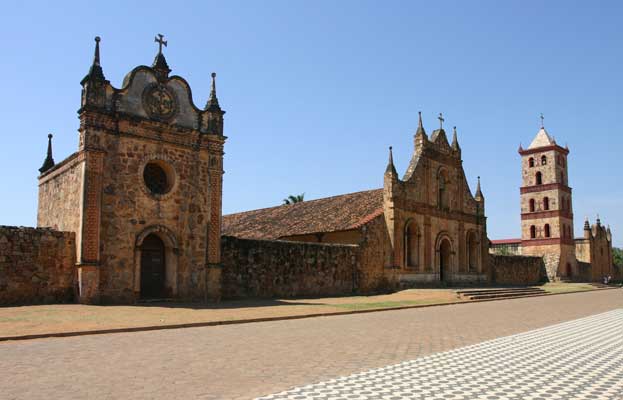Jesuit Missions sent by the Spanish Crown to assure the conquest of the Indias del Cielo, the Jesuit fathers arrived at the Viceroyalty of Peru in 1567 to bring Christianity to the indigenous communities. The first collegial church was founded in 1577 at Potosí, on Bolivian territory; in 1592 a new house was established at Santa Cruz de la Sierra. The Jesuits seemed to have rationalized, in the Chiquito territory, the model of reducciones (settlements of Christianized Indians) which was largely inspired by the ideal city of the humanist philosophers. Between 1696 and 1760, six groups of reducciones were founded in a style that married Roman Catholic architecture with local traditions.

Continent: South America
Country: Bolivia
Category: Cultural
Criterion: (IV)(V)
Date of Inscription: 1990
The Architecture of Churches
They defined the urban model: the houses of Indians regularly spaced along the three sides of a rectangular square, with the fourth reserved for the church, the collegial church, two workshops, and the schools, and sometimes also for the Casa de la Misericordia (almshouse), which housed widows and abandoned women. Unlike other Jesuit missions in South America that were abandoned after 1767, the reducciones of the Chiquitos survived the expulsion of the Company of Jesus. The six that remain - San Francisco Javier, Concepción, Santa Ana, San Miguel, San Rafael and San José - make up a living heritage on the former territory of the Chiquitos.The churches of the Chiquitos Missions of Bolivia are a remarkable example of the adaptation of Christian religious architecture to local conditions and traditions. Long walls defining three interior aisles divided by wooden columns and two exterior galleries, also supported by columns, constitute a very unique type of architecture, distinguished by the special treatment of the wooden columns and banisters. Only San José is an exception, because its stone construction was inspired by a Baroque model. These traditional architectural ensembles, which often enclose remarkable popular art objects, have become vulnerable under the impact of changes that threatened the Chiquitos populations following the agrarian reform of 1953.










No comments:
Post a Comment